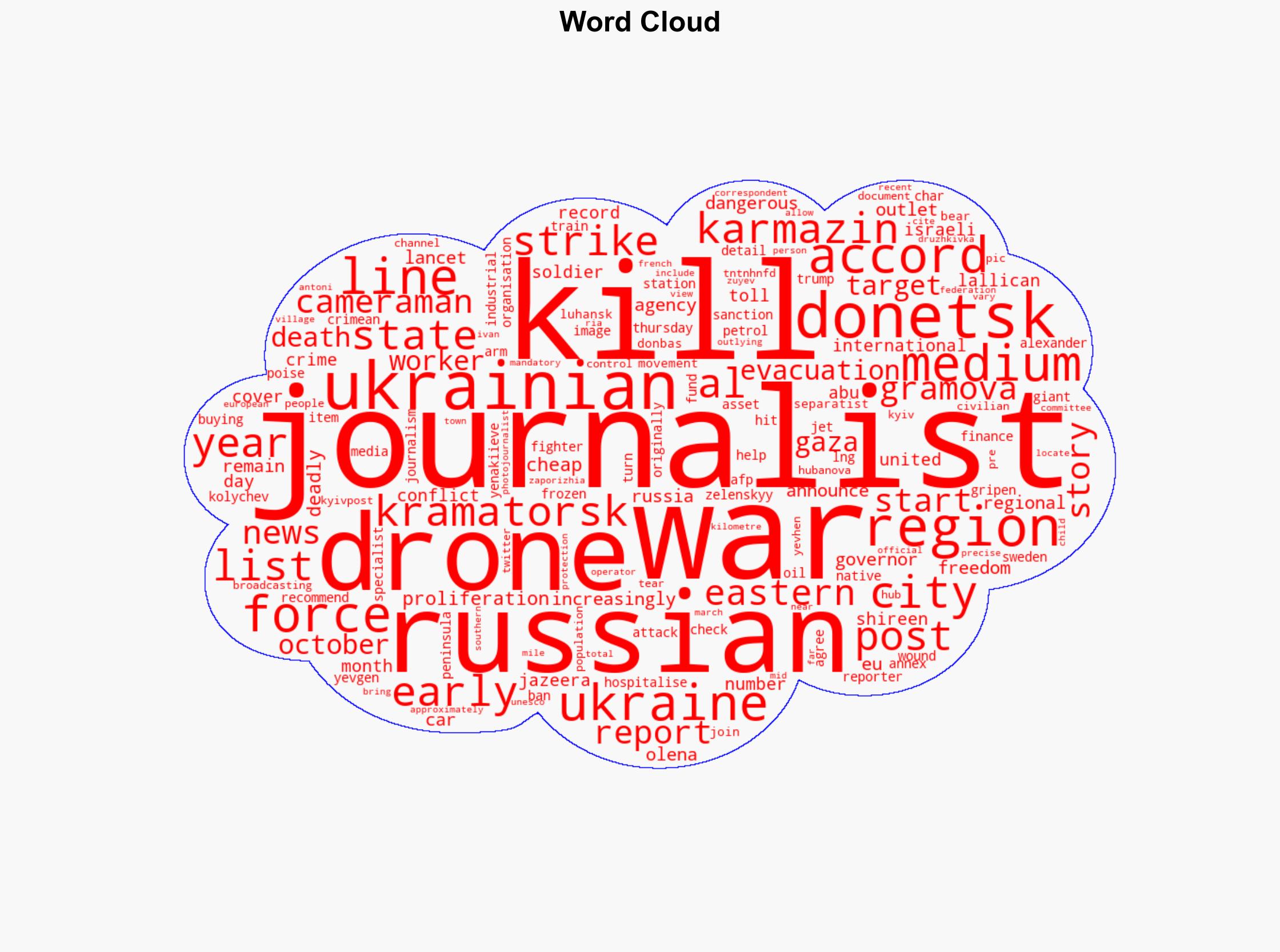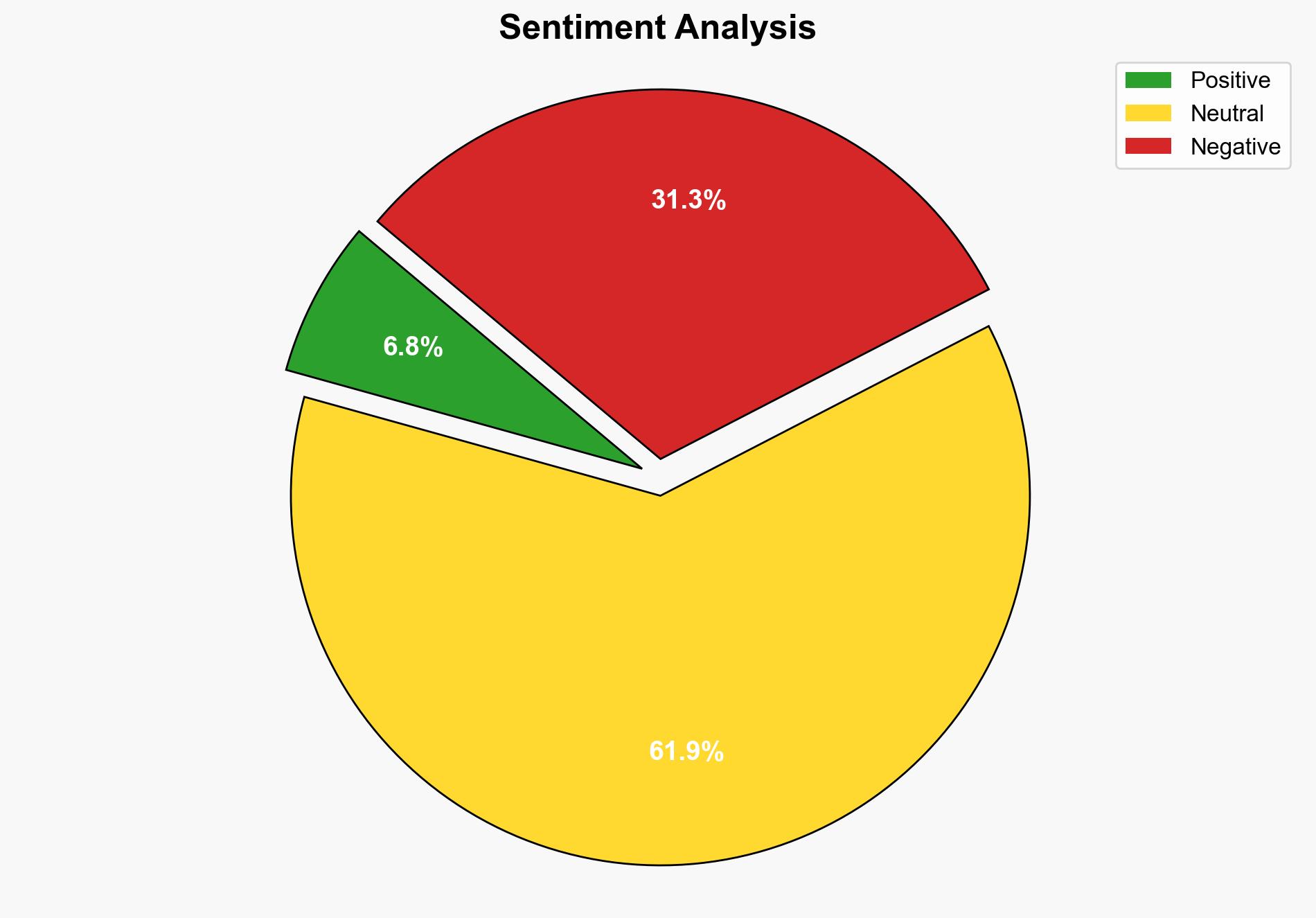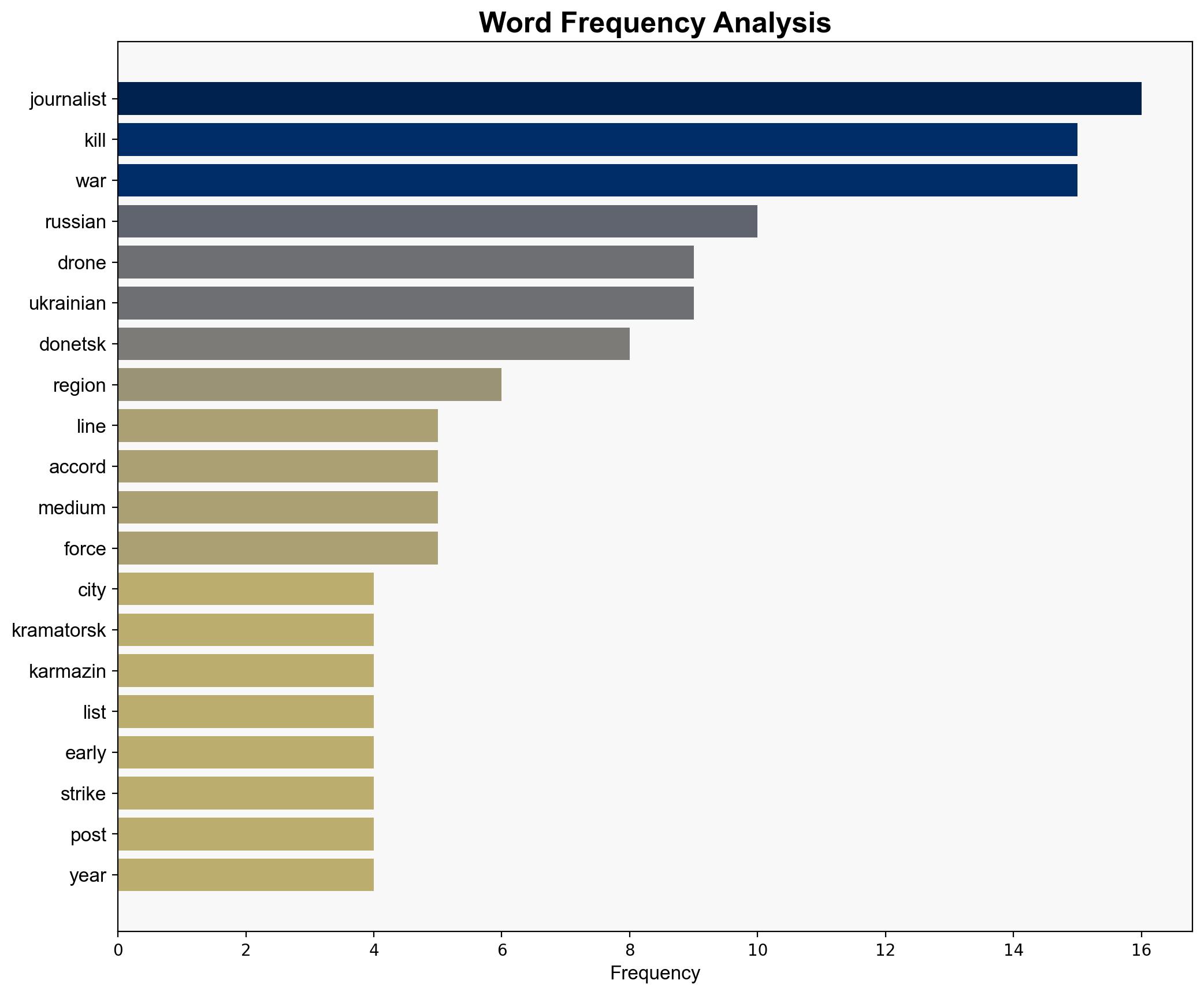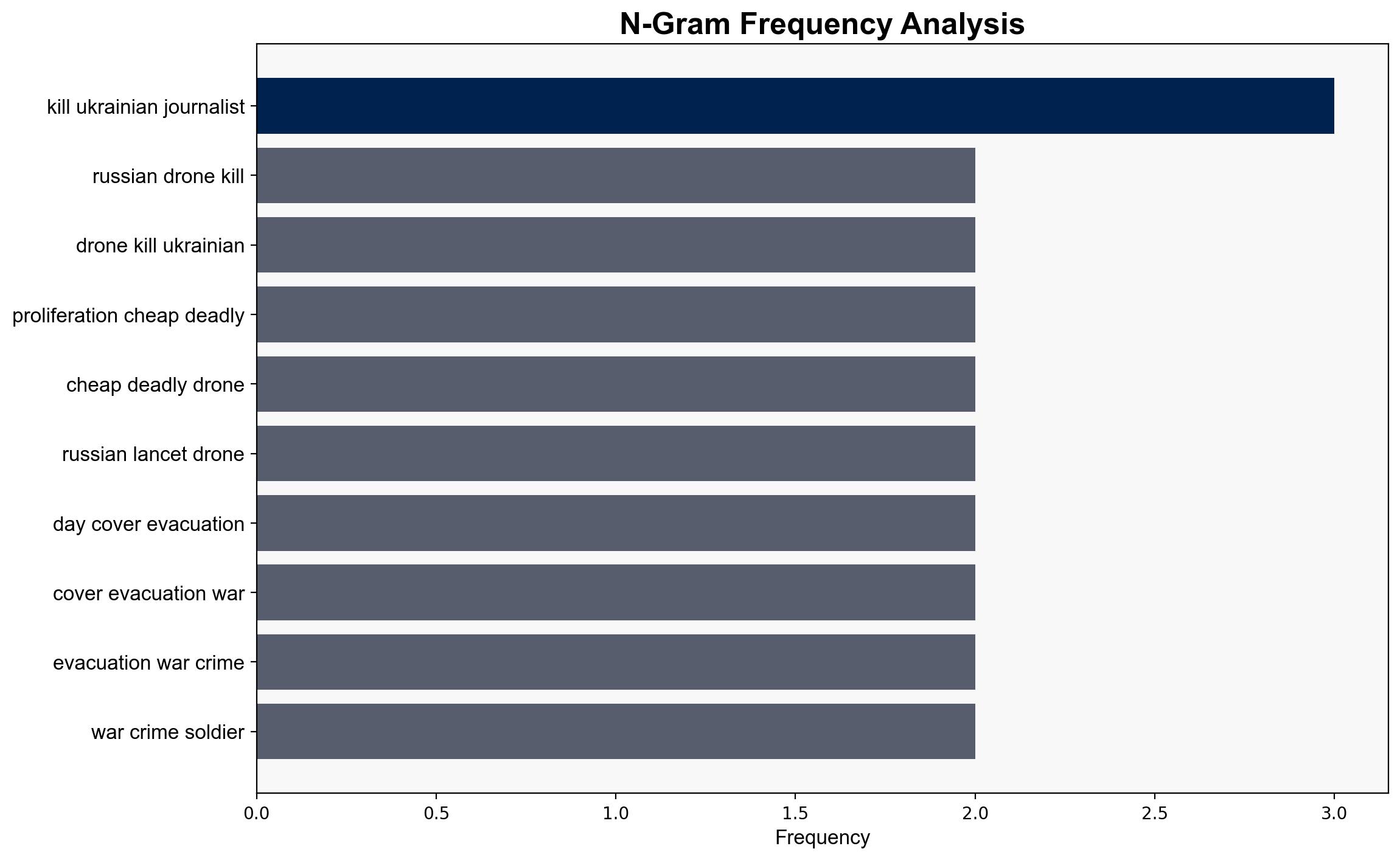Russian drone kills two Ukrainian journalists on Donetsk eastern front line – Al Jazeera English
Published on: 2025-10-23
Intelligence Report: Russian drone kills two Ukrainian journalists on Donetsk eastern front line – Al Jazeera English
1. BLUF (Bottom Line Up Front)
The incident involving the death of two Ukrainian journalists by a Russian drone highlights the increasing dangers faced by media personnel in conflict zones, particularly due to the proliferation of cheap and deadly drones. The most supported hypothesis is that this attack was a targeted effort to suppress media coverage and intimidate journalists operating in the region. Confidence level: Moderate. Recommended action: Enhance protective measures for journalists and increase international diplomatic pressure on Russia to adhere to international humanitarian laws.
2. Competing Hypotheses
1. **Targeted Suppression Hypothesis**: The Russian drone strike was a deliberate attempt to target journalists to suppress media coverage and intimidate other media personnel in the region.
2. **Collateral Damage Hypothesis**: The journalists were not specifically targeted; instead, they were collateral damage in a broader military operation aimed at Ukrainian forces or infrastructure.
3. Key Assumptions and Red Flags
– **Targeted Suppression Hypothesis** assumes that Russia is actively seeking to control the narrative by eliminating media presence. This is supported by the precision of drone strikes and previous incidents involving journalists.
– **Collateral Damage Hypothesis** assumes that the strike was part of a larger military strategy without specific intent to harm journalists. However, the precision of modern drones raises questions about this assumption.
– Red flags include the lack of direct evidence indicating the specific intent of the drone operators and potential bias in reporting from both Ukrainian and Russian sources.
4. Implications and Strategic Risks
The incident could escalate tensions between Russia and Ukraine, potentially drawing international condemnation and increasing support for Ukraine. The use of drones for targeted strikes on journalists may set a dangerous precedent, leading to increased risks for media personnel globally. There is also a risk of retaliatory actions by Ukraine, potentially involving cyber or military responses.
5. Recommendations and Outlook
- Enhance protective measures for journalists in conflict zones, including providing safety equipment and training.
- Encourage international bodies to investigate and condemn attacks on journalists, reinforcing the protection of media personnel under international law.
- Scenario-based projections:
- Best Case: Increased international pressure leads to a reduction in targeted attacks on journalists.
- Worst Case: Continued attacks on journalists result in a chilling effect on media coverage and increased regional instability.
- Most Likely: Sporadic attacks continue, prompting incremental improvements in journalist safety protocols.
6. Key Individuals and Entities
– Olena Gramova
– Yevgen Karmazin
– Alexander Kolychev
– Donetsk regional governor
7. Thematic Tags
national security threats, media safety, drone warfare, regional conflict





